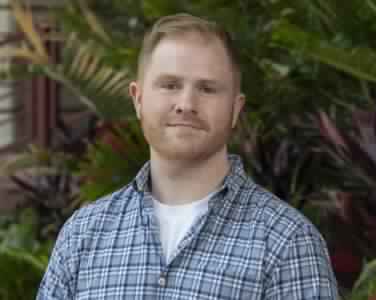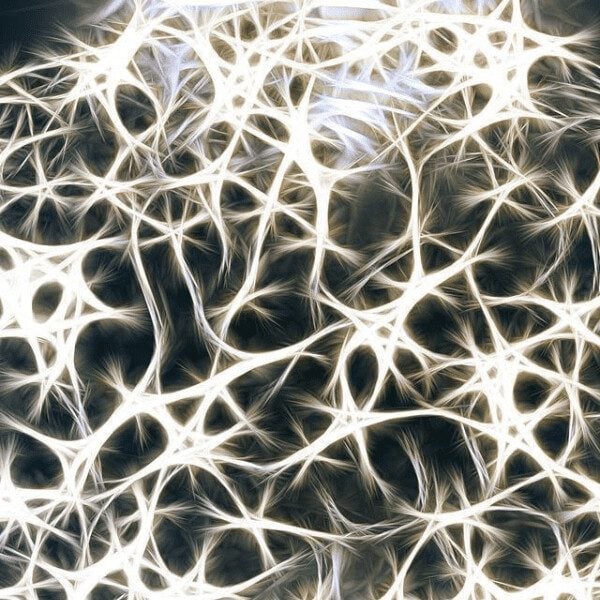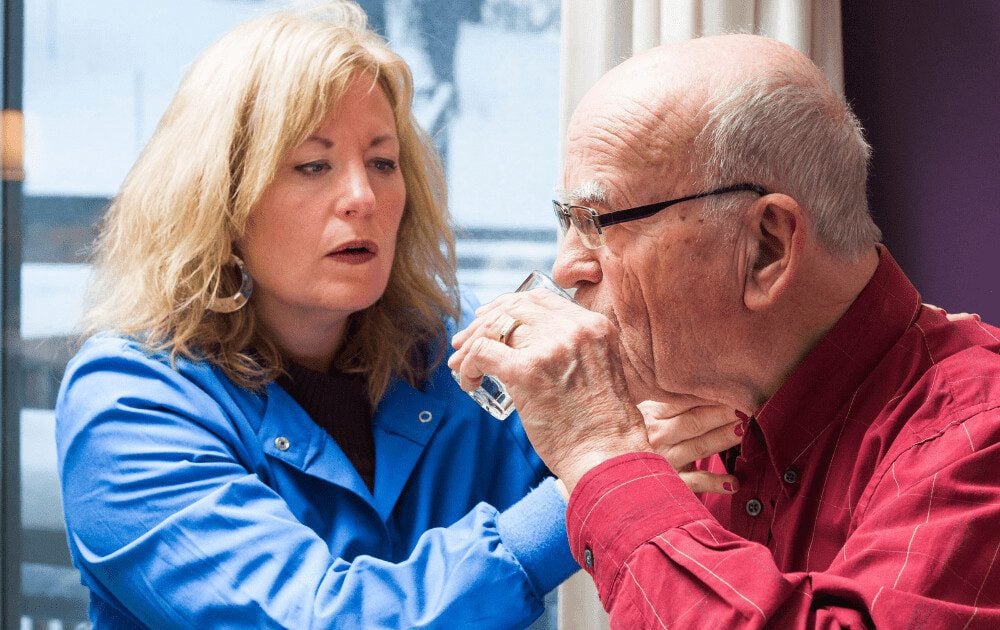
Photo: University of Pittsburgh
If you look at the ALS patient population it’s clear that the disease doesn’t discriminate. While most patients develop ALS between the ages of 40 and 70, cases can occur at any time in life. According to the ALS Association, men are 20% more likely to be diagnosed than women, though that gap becomes less prominent with age. And some 90% of patients have no familial history of the disease.
Yet, there are some commonalities in nearly all patients, regardless of age, sex or genetics.
Assistant Professor and Scientific Director of the Live Like Lou Center for ALS Research at the University of Pittsburgh, Chris Donnelly, told Target ALS that one recurring characteristic in ALS patients is that the DNA inside the nucleus of an otherwise-healthy cell lacks a protein called “TDP-43.” Instead, that protein often aggregates [clumps together] outside of the cell’s nucleus.
What he hopes to discover now is why those formations take place.
Together, Donnelly, Dr. Sophie Parmentier-Batteur [Merck] and Jim Shorter [University of Pennsylvania] are one of six consortia to be named grantees in a funding call announced earlier this year by Target ALS and The Association for Frontotemporal Degeneration (AFTD). You might remember that Target ALS spoke with Dr. Parmentier-Batteur recently about the team’s project examining TDP-43 aggregates and possible therapeutic approaches for ALS and FTD.
In the latest installment of our Under the Microscope, we continue that conversation with Donnelly to go deeper into what the team hopes to uncover with the project.
Target ALS:
Congratulations to your team on being named one of the six grantees in the Target ALS/AFTD partnership. What do you hope to accomplish with this project?
Chris:
The background of our project is that there is this common neuropathology in patients who have ALS. Almost all patients, whether or not they have genetic mutations, have the presence of TDP-43 [a protein encoded in our genes] that should be where the DNA is in the nucleus. However, it’s not there. Often, we see that it forms in clumps on the outside of the nucleus away from the DNA. It’s not everywhere. It’s mostly in the neurons that are dying, but that’s the one commonality that we see in patients. While there may be many causes of the disease, this clumping seems to happen to almost everyone with the disease.
What we’re really trying to understand is why those clumps form and what makes them clump. We’ve already created a system to make that happen artificially in a lab. We discovered that the protein only clumps when it’s not interacting with specific partners. And if it’s interacting with those partners, it can’t clump.
This project aims to develop a screen [small library of compounds] and to identify molecules that bind TDP-43 to mimic the normal binding partners of the protein, prevent the protein from clumping and rescue any associated cell death.
Target ALS:
TDP-43 seems to be such an important part of the puzzle. What do you think of its role in advancing research versus other potential biomarkers? How is TDP-43 different from what researchers have studied in the past?
Chris:
We’ve known about TDP-43 neuropathology since about 2006, and it suggests that there’s a commonality of the disease. This may not be the cause of the disease because you can have genetic causes that will still get TDP-43 inclusions, and it’s not a genetic mutation in TDP-43. You can also have a genetic mutation in TDP-43 that causes ALS too. You can find TDP-43 neuropathology in 97% of patients, suggesting a converging mechanism in ALS. You similarly see this in about 45% of patients with Frontotemporal Dementia (FTD), which we know lies on the neurodegenerative disease spectrum with ALS. If you’re thinking about something that would hit the broadest population of patients, TDP-43 is a good target because it is a commonality in the largest population of patients.
We know that disregulation of TDP-43 is toxic to cells, so if we can develop ways to stop or slow this from happening, it may delay the disease or progression — even if it’s not the primary cause of the disease.
Target ALS:
Would you say the TDP-43 clumping could be a cause or more of a symptom?
Chris:
We do not know if the TDP-43 clumping is the result of the disease or a symptom. What we do know is that all the models suggest that if you disrupt TDP-43 in any way, whether that means you make too much of it, you make too little of it, or you make it artificially clump and form the pathology as we do, it is toxic to cells. It is a tightly regulated protein and critical for cell function.
It may be a late event in the disease, and there is an earlier event that promotes TDP-43 nuclear loss and clumping. However, we do know that human neurons do not tolerate TDP-43 nuclear loss or clumping and will eventually die once this occurs.
The difficulty in targeting TDP-43 has been the lack of a model system to recapitulate the clumping process and pathology in live cells. There are not many ways to recreate what is observed in ALS patient neurons.
One model that we developed is a system to initiate TDP-43 pathology in a cell artificially. This allows us to study why it actually clumps and identify molecules that prevent or reverse it from clumping. In this project, we are adapting this system to develop a high-throughput screen [process to quickly find the right compounds] with Merck and using this to identify molecules that can prevent or reverse TDP-43 pathology and protect the cells from this pathological process.
Target ALS:
We’ve already spoken with Dr. Parmentier-Batteur, but tell me about your relationship with your collaborators and how your team was assembled. The Target ALS model is about bringing together academia with private industry, so what have your thoughts been on this collaboration?
Chris:
We have been fortunate to be part of the Target ALS community and present at the annual meetings. Through these meetings, we are able to interact with various members of industry who have an interest in developing ALS therapies. It has also taught us about the therapeutic development process and how to adapt our basic science work to advance this process. For this particular collaboration, we were introduced to members of Merck at the Target ALS annual meeting and kept in contact throughout the year following. We were also collaborating with Jim Shorter’s lab on similar projects from a basic science perspective, so when the opportunity to apply for a Target ALS grant arose, we thought it was an ideal collaborative team and developed the funded project using our combined areas of expertise.





